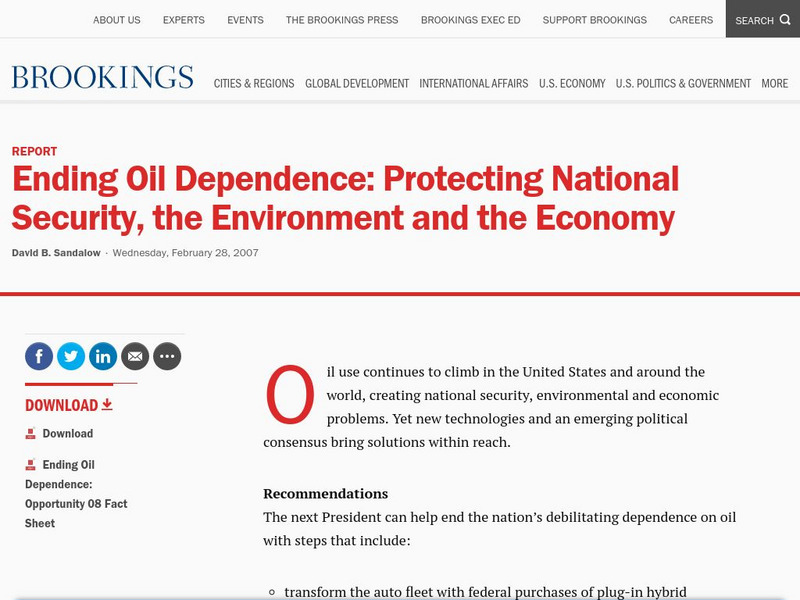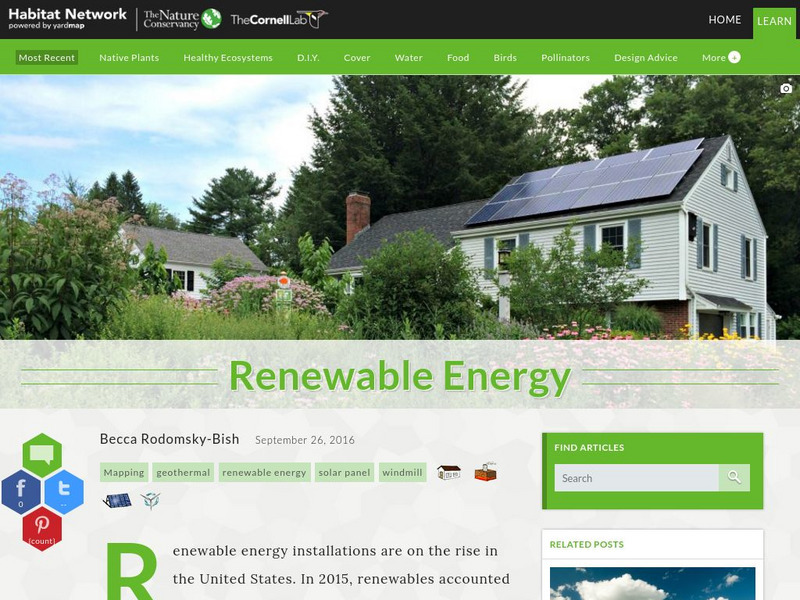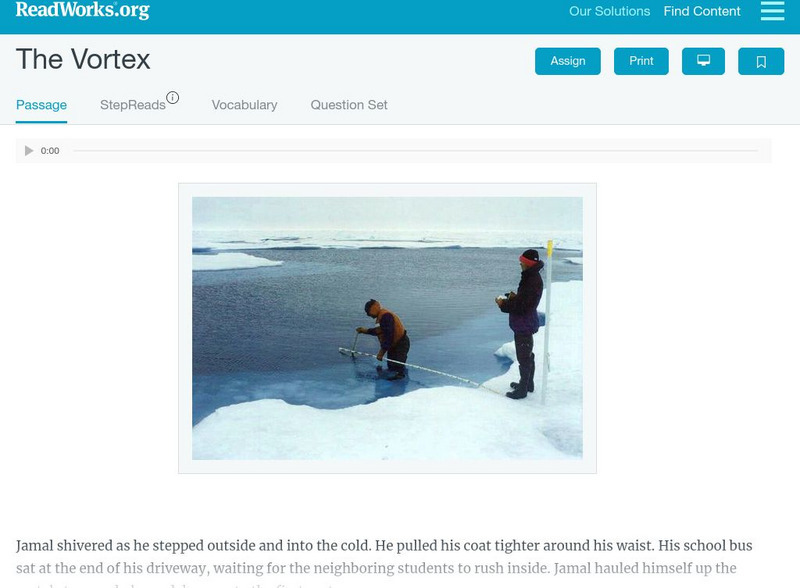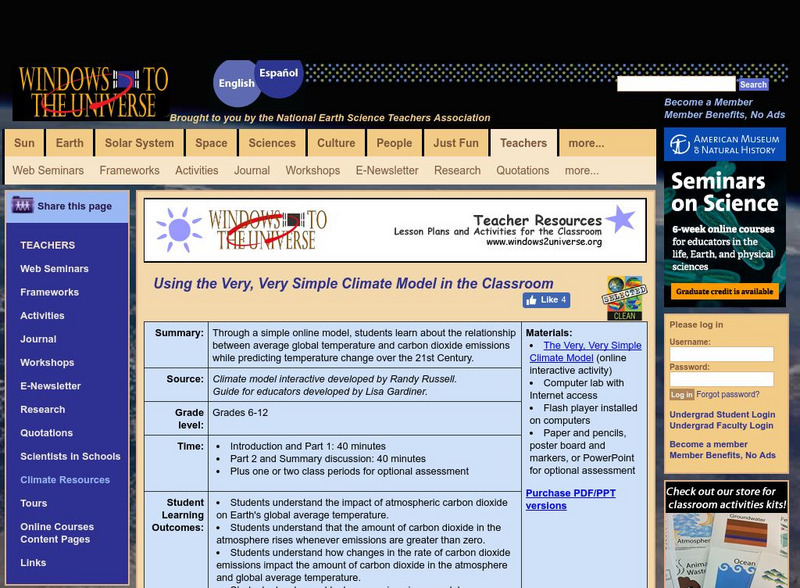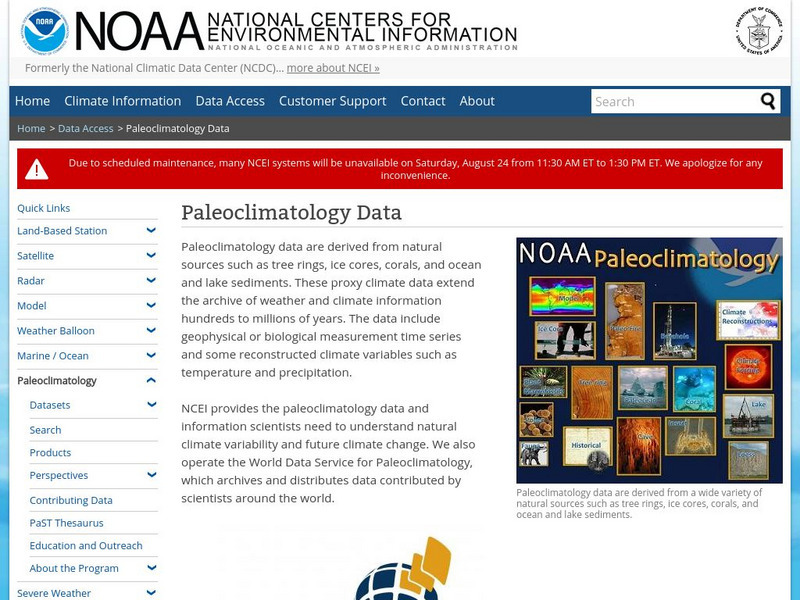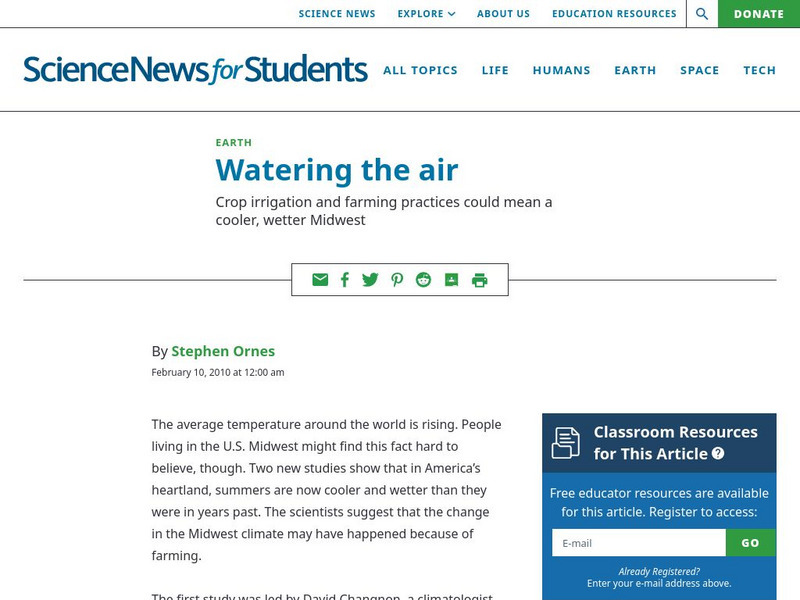Hi, what do you want to do?
Other
Brookings Institution: Ending Oil Dependence: Protecting National Security
A critique of America's dependency on oil, authored by Brookings scholar David Sandalow, with a six-part recommendation for solving the problem. Includes downloadable position paper and fact sheet. (Published Feb. 28, 2007)
The Environmental Literacy Council
Environmental Literacy Council: Temperature
The difference between heat and temperature is explained, followed by a discussion of temperature and its relation to global climate change. Gallileo Galilee, Daniel Gabriel Fahrenheit, Anders Celsius, and Carl Linnaeus are mentioned in...
Cornell Lab of Ornithology
Habitat Network: Renewable Energy
Find out about efforts to promote the use of renewable energy sources by homeowners and businesses. This was a project where homeowners could submit data about what they were doing to use renewable energy sources. The site is no longer...
Read Works
Read Works: The Vortex
[Free Registration/Login Required] A literary text about a boy named Jamal who learns about how global warming can create colder weather in the winter because of the polar vortex. A question sheet is available to help students build...
US Environmental Protection Agency
Epa: Climate Change
Learn all the facts and figures about climate change.
CK-12 Foundation
Ck 12: Earth Science: Elevation on the Earth
[Free Registration/Login may be required to access all resource tools.] Using latitude and longitude to find a location.
National Earth Science Teachers Association
Windows to the Universe: Using the Very Simple Climate Model in the Classroom
Through a simple online model, students learn about the relationship between average global temperature and carbon dioxide emissions while predicting temperature change over the next century.
Other
Royal Geographical Society: Discovering Antarctica
Resource-rich website will help students understand the challenges that Antarctica faces, the history of its exploration and the relationship between Antarctica and the rest of the world. Activities reveal insights about how it feels to...
Community Learning Network
Community Learning Network: Global Warming/climate Change Theme Page
A large collection of web resources on the topics of global warming and climate change. Some links may be broken, as the site is no longer actively maintained.
Annenberg Foundation
Annenberg Learner: The Habitable Planet: Energy Lab
Try and meet global energy demands by using alternative energy sources while keeping the carbon levels in the atmosphere down to acceptable levels. Simulator includes a data table available for download for student records.
PBS
Pbs Nova: The Big Energy Gamble
While most people believe that global warming is a reality, Marlo Lewis, Jr. is a skeptic. Lewis is with the Competitive Enterprise Institute in Washington, D.C. In this interview, he questions the California initiative to lower...
NOAA
Noaa: Paleoclimatology Program: Astronomical Theory of Climate Change
Use this site to learn how the Earth's not-so-circular orbit around the sun has affected our climate over thousands of years, and continues to affect our climate now.
Science Education Resource Center at Carleton College
Serc: From Grid to Home
Students analyze energy use, cost, and source patterns from household to regional scales and relate these patterns to CO2 emissions.
University of Illinois
University of Illinois Extension: Tree House Weather Kids: Seasons and Temperature: Greenhouse Effect
Animated resource helps young researchers understand what global warming and the greenhouse effect mean.
Society for Science and the Public
Science News for Students: Sea Changes
Discusses the serious impact greenhouse gases are having on the pH balance of the oceans. It looks at the sea butterfly, which has more difficulty forming a shell as ocean acidification increases, as well as the damage acidification does...
American Geosciences Institute
American Geosciences Institute: Earth Science Week: Exploring Climate Change With Gis
Use Geographic Information System (GIS) technology to observe climate change with these interactive lessons.
Other
Carbon Footprint: Climate Change
Learn why the overall climate is changing due to global warming. Also, see what will happen if humans do nothing to stop this from happening.
University Corporation for Atmospheric Research
Ucar: Fact Sheet for El Nino
This site from the Univ. Corp. for Atmospheric Research provides detailed information on El Nino and its effects on the trade winds is offered at this site, with satellite photos.
Other
Cape Farewell Arctic Voyage
Cape Farewell is an organization dedicated to the study of the ocean's role in regulating global temperature and its relationship to climate change and global warming. Each year a trek is made in order to study these climate changes....
NASA
Nasa Earth Observatory: Ocean and Climate Fact Sheet
Read about Earth's oceans and the effects that climate have had on the rising temperatures over the past one hundred years. Discover how the Earth's ocean and atmosphere are interlocked so that when one changes, the other is affected.
NASA
Nasa Earth Observatory: El Nino's Extended Family Introduction
This article discusses cycle of global weather patterns and its relation to El Nino. Learn how global weather patterns are being tracked by satellites and how scientists are predicting weather patterns up to a year in advance.
American Geosciences Institute
American Geosciences Institute: Earth Science Week: Exploring Change With Gis
Gives an overview of how Geographic Information Systems technology is used to monitor changes in conditions on the Earth. Provides a link to the website with lessons on using GIS. (Due to site changes, you may need to search for teachers...
Society for Science and the Public
Science News for Students: Watering the Air
Discusses research done in the American Midwest showing that farming practices that increase humidity levels possibly could have an impact on the weather, causing a reduction in the average temperature and an increase in the amount of...
American Geosciences Institute
American Geosciences Institute: Earth Science Week: Your Own El Nino
Find out how to create a miniature El Nino with simple, household materials.





